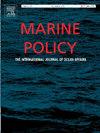Realising the potential of interoperable data products to improve the outlook for marine biodiversity: Lessons from the European marine observation and data network
IF 3.5
2区 社会学
Q2 ENVIRONMENTAL STUDIES
引用次数: 0
Abstract
Policies responding to increasing pressures on marine biodiversity require adequate data to support their implementation and to monitor their effectiveness. Marine biodiversity science has made significant progress generating and aggregating biodiversity data, however turning this into evidence-based knowledge useful to decision makers remains a significant challenge. ‘Data products’ provide processed data to address specific user needs, and are widely used in climate science, geosciences, and remote sensing, but the development of biodiversity data products is challenging due to the complexity of biological systems and of the data derived from surveys designed without explicit biodiversity policy or management guidance. A wide range of potential products of interest may include distributional data for thousands of individual taxa, requiring advanced statistical methods to model patterns in biodiversity using heterogeneous and sparse source data with biases in spatial, temporal, and taxonomic coverage. We illustrate these challenges using data products created within the Biology thematic lot of the European Marine Observation and Data Network (EMODnet), and we propose that the EMODnet Biology approach, which involves providing clear and open documentation of the product creation process with a strong emphasis on the computational tools needed to link source data to higher-level data products, can productively support decision making at the European scale. Furthermore, this approach provides part of the essential infrastructure required to maximise the financial benefits of FAIR data, and data products play a key role in empowering users to make maximum use of existing biodiversity data to help to understand and manage our seas.
求助全文
约1分钟内获得全文
求助全文
来源期刊

Marine Policy
Multiple-
CiteScore
7.60
自引率
13.20%
发文量
428
期刊介绍:
Marine Policy is the leading journal of ocean policy studies. It offers researchers, analysts and policy makers a unique combination of analyses in the principal social science disciplines relevant to the formulation of marine policy. Major articles are contributed by specialists in marine affairs, including marine economists and marine resource managers, political scientists, marine scientists, international lawyers, geographers and anthropologists. Drawing on their expertise and research, the journal covers: international, regional and national marine policies; institutional arrangements for the management and regulation of marine activities, including fisheries and shipping; conflict resolution; marine pollution and environment; conservation and use of marine resources. Regular features of Marine Policy include research reports, conference reports and reports on current developments to keep readers up-to-date with the latest developments and research in ocean affairs.
 求助内容:
求助内容: 应助结果提醒方式:
应助结果提醒方式:


